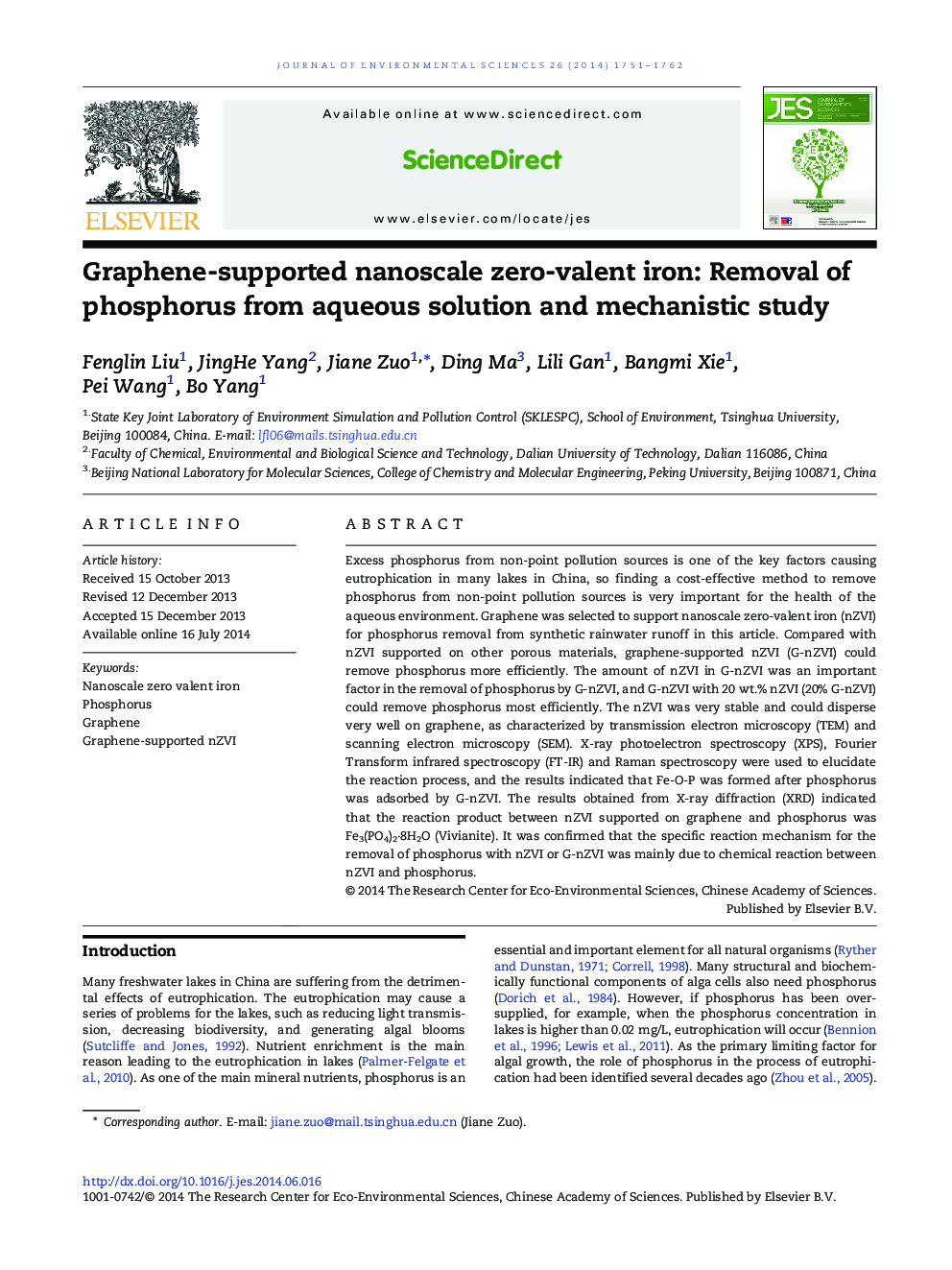| Article ID | Journal | Published Year | Pages | File Type |
|---|---|---|---|---|
| 4454279 | Journal of Environmental Sciences | 2014 | 12 Pages |
Excess phosphorus from non-point pollution sources is one of the key factors causing eutrophication in many lakes in China, so finding a cost-effective method to remove phosphorus from non-point pollution sources is very important for the health of the aqueous environment. Graphene was selected to support nanoscale zero-valent iron (nZVI) for phosphorus removal from synthetic rainwater runoff in this article. Compared with nZVI supported on other porous materials, graphene-supported nZVI (G-nZVI) could remove phosphorus more efficiently. The amount of nZVI in G-nZVI was an important factor in the removal of phosphorus by G-nZVI, and G-nZVI with 20 wt.% nZVI (20% G-nZVI) could remove phosphorus most efficiently. The nZVI was very stable and could disperse very well on graphene, as characterized by transmission electron microscopy (TEM) and scanning electron microscopy (SEM). X-ray photoelectron spectroscopy (XPS), Fourier Transform infrared spectroscopy (FT-IR) and Raman spectroscopy were used to elucidate the reaction process, and the results indicated that Fe-O-P was formed after phosphorus was adsorbed by G-nZVI. The results obtained from X-ray diffraction (XRD) indicated that the reaction product between nZVI supported on graphene and phosphorus was Fe3(PO4)2·8H2O (Vivianite). It was confirmed that the specific reaction mechanism for the removal of phosphorus with nZVI or G-nZVI was mainly due to chemical reaction between nZVI and phosphorus.
